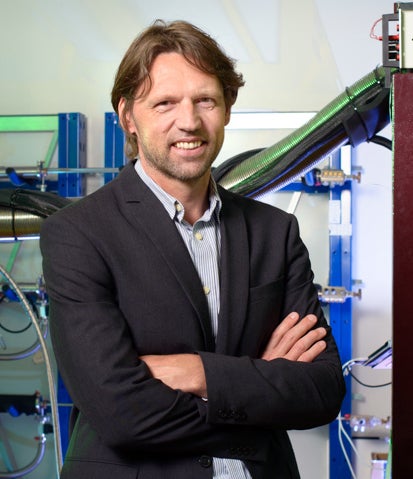Leo Kouwenhoven, Delft University of Technology
Majorana Fermions: Particle Physics on a Chip
Join us for the next Quantum Frontiers Distinguished Lecture Series when Dr. Leo Kouwenhoven will talk about particles that are equal to their anti-particles.

Kouwenhoven specializes in quantum information science with the use of nanotechnology for realizing quantum bits in solid-state electronic devices. Sponsored by Microsoft, Kouwenhoven's group has been searching for Majorana fermions in semiconductor nanowires. Their first report on Majoranas was published in Science in 2012.
Abstract:
Majorana fermions were first predicted in 1937 by Ettore Majorana in Rome. These are particles with the mysterious property that they are equal to their anti-particles. This defining property immediately implies that these "Majoranas” have zero charge and zero energy. Ongoing searches for detecting Majoranas occur in the context of high-energy physics and dark matter, but yet without success. Simultaneously, condensed matter theorists proposed specially designed electronics that can host Majoranas. This insight led to the successful experiment that has the signature of a Majorana, potentially the key to developing a quantum computer.
Professor Kouwenhoven’s Lab studies low-dimensional nano-scale semiconductor systems. The research focuses on basic properties of these systems as well as on possible applications in quantum information processing and novel opto-electronic devices. They also design and realize nano-scale objects with desirable quantum mechanical behavior by controlling the motion of individual electrons, creating quantum superpositions of single spins, transferring spin-states to flying photons, and inducing superconductivity into semiconductors as well as trying to detect new particles, Majorana Fermions. For these goals the members of the lab use one-dimensional materials such as carbon nanotubes and semiconductor nanowires. By means of nanofabrication they define nanoscale electronic and photonic devices with new quantum functionality. Those devices are measured at very low temperatures, close to absolute zero temperature. The labs are high-tech in terms of nanofabrication, low-temperature setups and low-noise electronics.